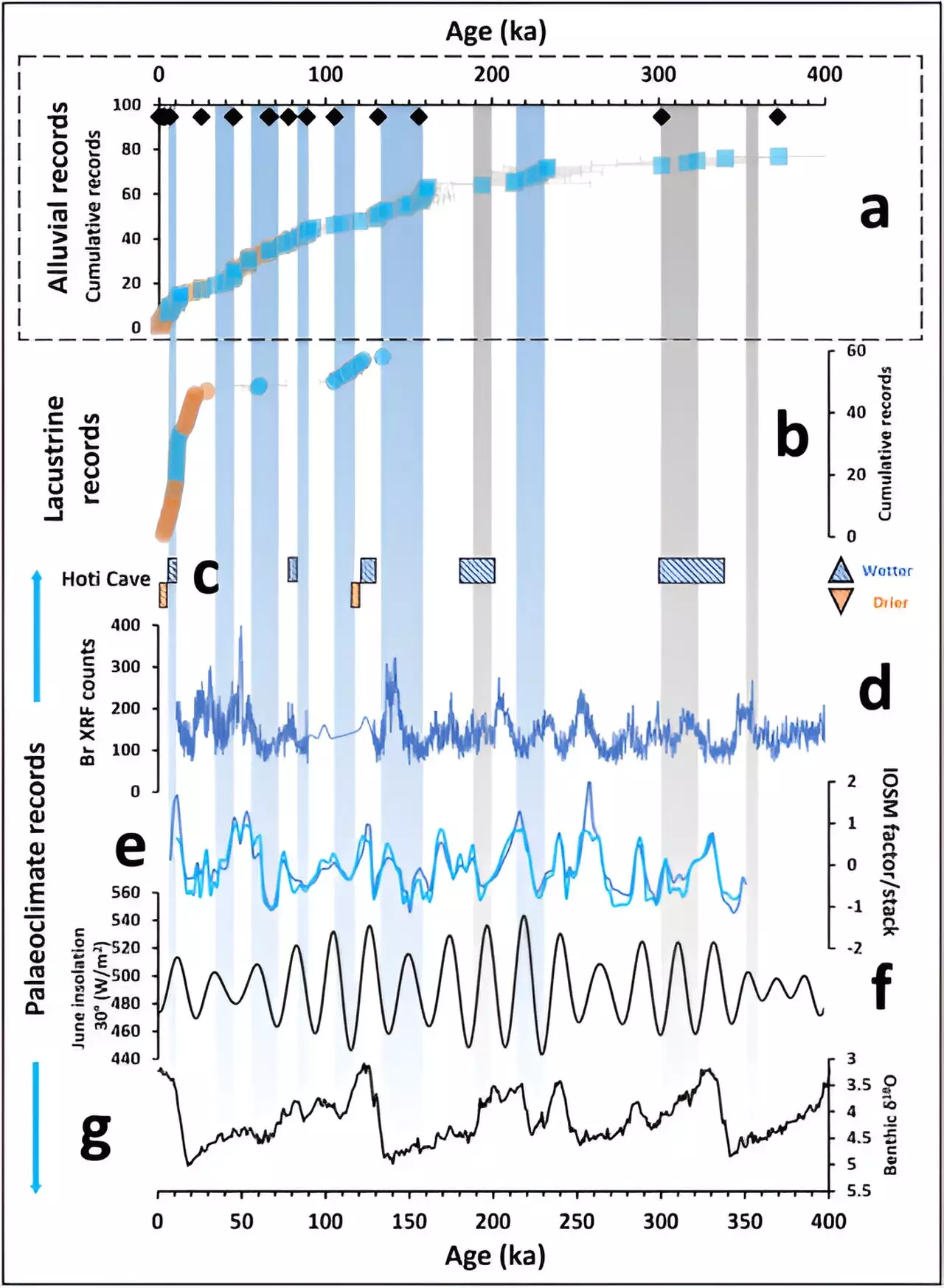Earth’s topography is continuously eroding, resulting in the transportation of sediment through rivers across various landscapes. The sediment is carried in the water column, bounces along the river bed, or rolls larger pebbles. As the topography flattens, the deceleration in water velocity leads to the deposition of this material in a fan shape at the river mouth. Monsoons, which are seasonal climate phenomena, can significantly influence the development of alluvial fans by increasing the volume and velocity of water, thereby supporting the growth of larger alluvial fans. In a recent study published in Quaternary Science Reviews, researchers from the University of Oxford explored the connection between alluvial fan sedimentation and monsoon rainfall patterns, with a focus on the impact of Earth’s orbital cycles.
Dr. Sam Woor and his colleagues conducted their research in the arid Hajar mountains of southeast Arabia. They studied alluvial fans ranging from 0.01 km2 to 10,000 km2, dating back to the Mid-Late Quaternary period, which occurred approximately 770,000 years ago. The scientists aimed to determine the links between alluvial fan sedimentation and monsoon rainfall patterns affected by geological timescales of approximately 23,000 years (precession) and 100,000 years (eccentricity).
The research team collected samples from eight sites across mountain-front fans and valley infills in Oman. They treated the samples with acids to remove carbonates and organic material and isolated medium-coarse quartz grains for further analysis using a technique called optically stimulated luminescence. This method relies on the radioactive signal of elements in the crystal to determine the age of alluvial aggradation. By measuring the emitted light and estimating the number of trapped electrons, the scientists could establish the exposure to radiation and determine the ages of the alluvial fans.
Dr. Woor and his colleagues discovered a clear connection between grain size and climate patterns. Coarse conglomerates of rock fragments embedded in a finer matrix indicated thick floodplain deposits, typical of high rainfall events during the Indian Ocean Summer Monsoon. These events coincided with precessional maxima, which caused seasonal contrasts to be more extreme in one hemisphere compared to the other. Conversely, samples taken from times of ephemeral flow with fine silt-sand and laminations indicated precessional minima.
Sustained hydrological activity was identified in ten periods over the last 400,000 years, each of which broadly coincided with precession and eccentricity peaks. The oldest site in the sample area, estimated to be 300,000 to 370,000 years old, revealed silty paleosols and braided streams formed during high flow events. This period aligned with an interglacial period in the northern hemisphere and cave formations in Oman that provided evidence of enhanced rainfall.
The subsequent phases of alluvial fan aggradation were recorded approximately 156,000, 132,000, 105,000, 89,000, 67,000, 45,000, 25,000, 7,000, and 2,000 years ago. These findings suggest that arid conditions between Indian Ocean Summer Monsoon events lead to physical weathering of the landscape. As heavy rainfall occurs during climate events, the mobilized sediment is deposited, resulting in the continuous growth of alluvial fans.
The research also highlighted the impact of orbital cycles on Earth’s climate. The combination of the precessional and eccentricity cycles influenced the drainage networks, which exhibited high sensitivity to even small increases in rainfall. Interglacial periods occurring in 100,000-year cycles further intensified precipitation due to increased sea surface temperatures and water vapor abundance in the atmosphere.
The study conducted by Dr. Sam Woor and his colleagues provides valuable insights into the impact of monsoons on the development of alluvial fans. By analyzing sediment samples and studying the connections between climate patterns and grain size, the researchers revealed the significant influence of Earth’s orbital cycles on alluvial fan growth. These findings contribute to our understanding of climate variability in arid regions during the Quaternary period and shed light on the larger factors that impact local environmental conditions.


Leave a Reply